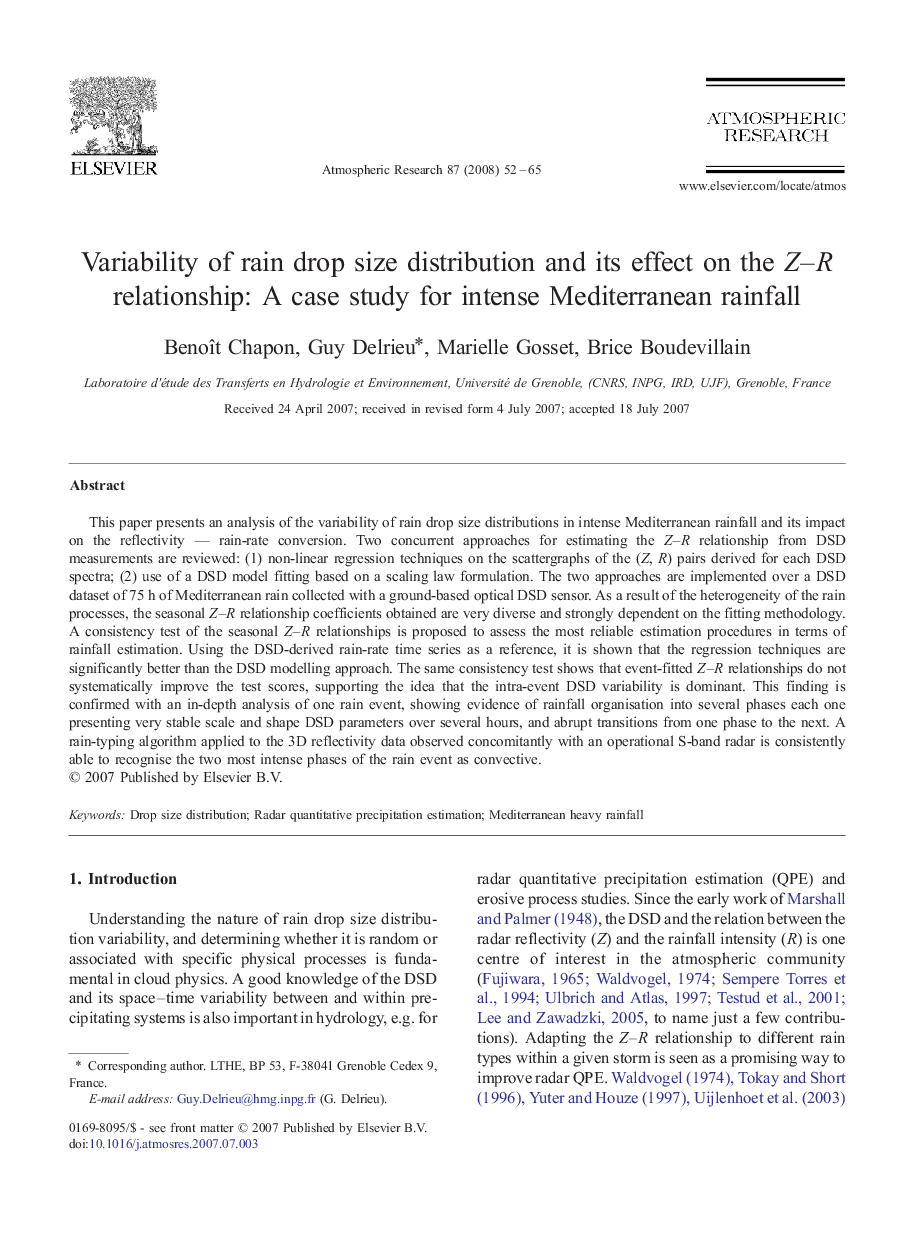| Article ID | Journal | Published Year | Pages | File Type |
|---|---|---|---|---|
| 4451363 | Atmospheric Research | 2008 | 14 Pages |
This paper presents an analysis of the variability of rain drop size distributions in intense Mediterranean rainfall and its impact on the reflectivity — rain-rate conversion. Two concurrent approaches for estimating the Z–R relationship from DSD measurements are reviewed: (1) non-linear regression techniques on the scattergraphs of the (Z, R) pairs derived for each DSD spectra; (2) use of a DSD model fitting based on a scaling law formulation. The two approaches are implemented over a DSD dataset of 75 h of Mediterranean rain collected with a ground-based optical DSD sensor. As a result of the heterogeneity of the rain processes, the seasonal Z–R relationship coefficients obtained are very diverse and strongly dependent on the fitting methodology. A consistency test of the seasonal Z–R relationships is proposed to assess the most reliable estimation procedures in terms of rainfall estimation. Using the DSD-derived rain-rate time series as a reference, it is shown that the regression techniques are significantly better than the DSD modelling approach. The same consistency test shows that event-fitted Z–R relationships do not systematically improve the test scores, supporting the idea that the intra-event DSD variability is dominant. This finding is confirmed with an in-depth analysis of one rain event, showing evidence of rainfall organisation into several phases each one presenting very stable scale and shape DSD parameters over several hours, and abrupt transitions from one phase to the next. A rain-typing algorithm applied to the 3D reflectivity data observed concomitantly with an operational S-band radar is consistently able to recognise the two most intense phases of the rain event as convective.
